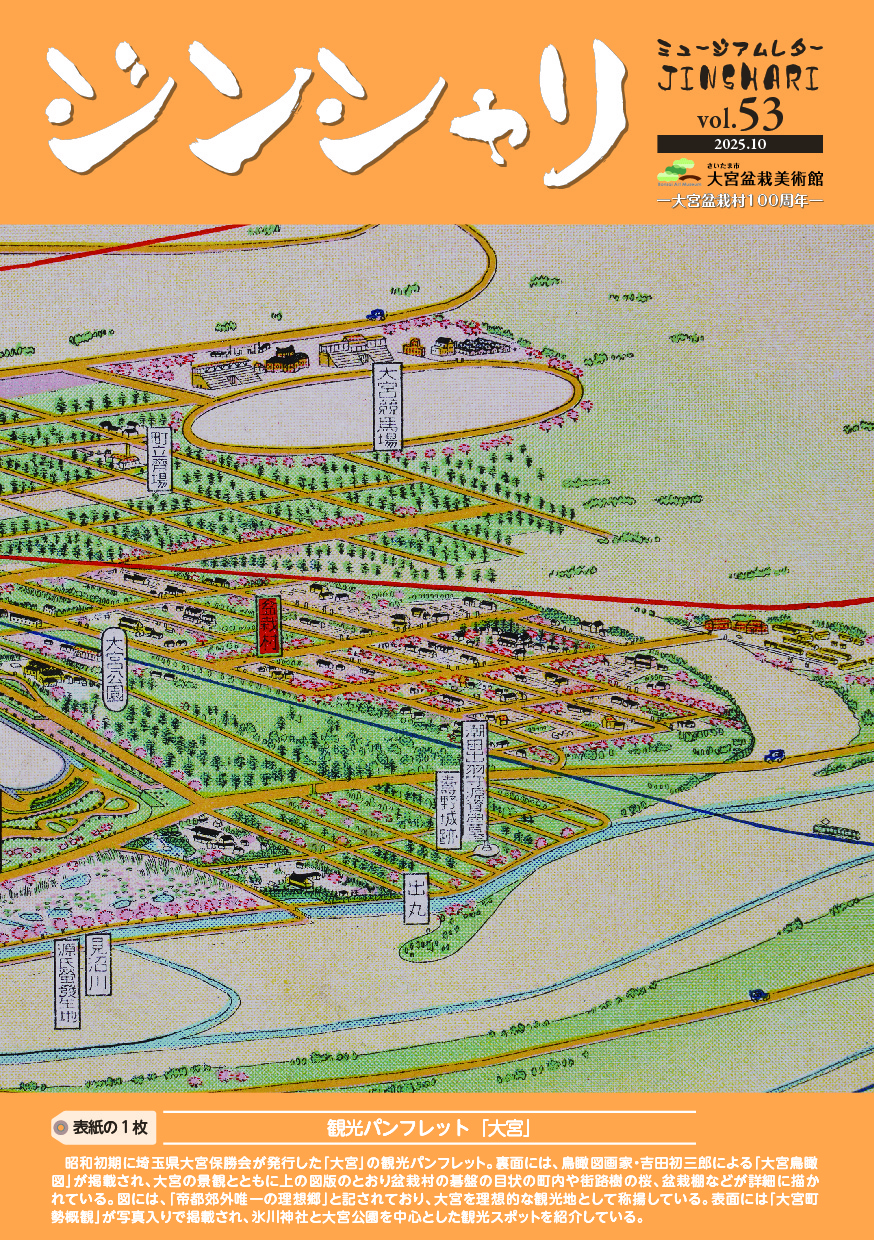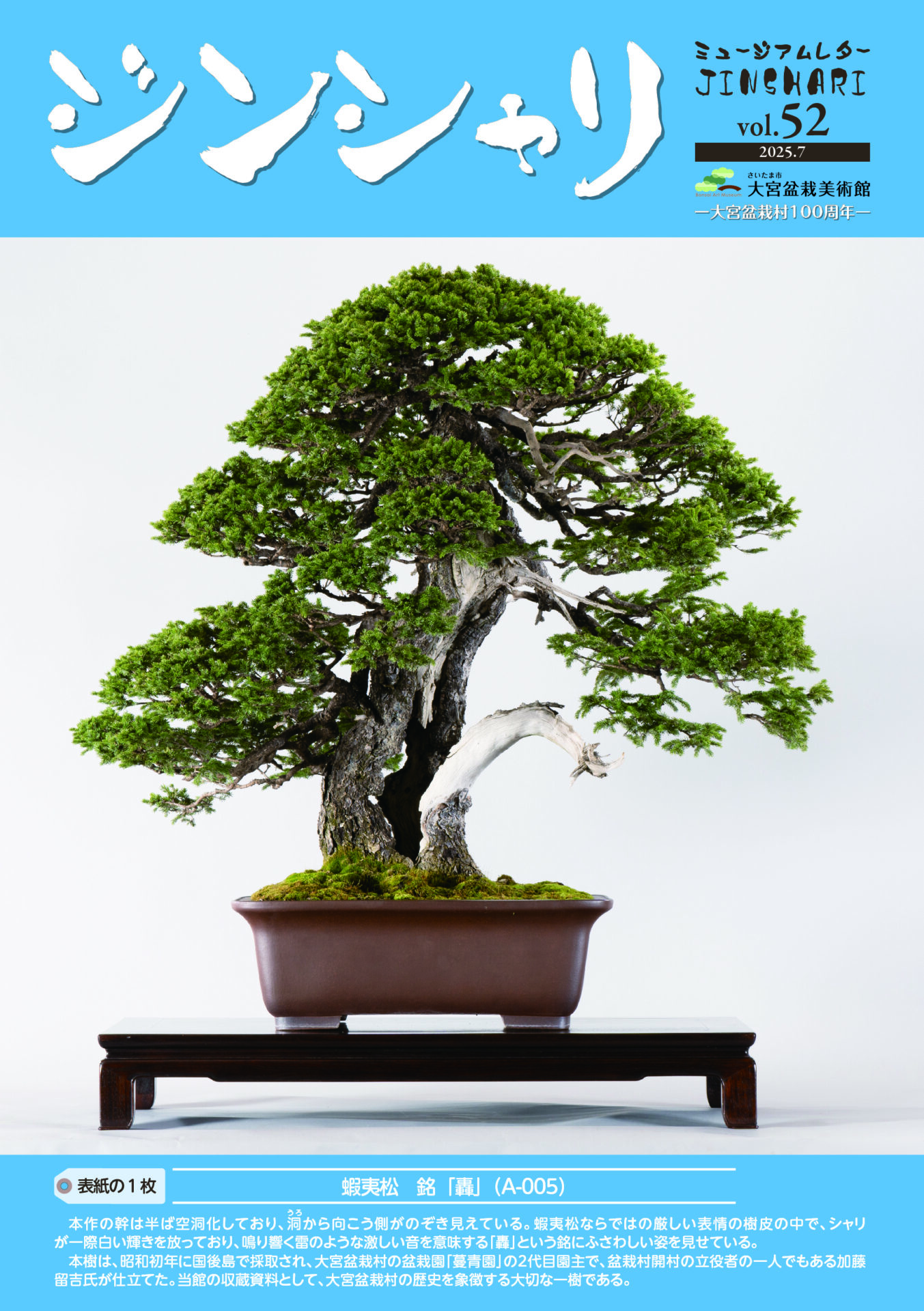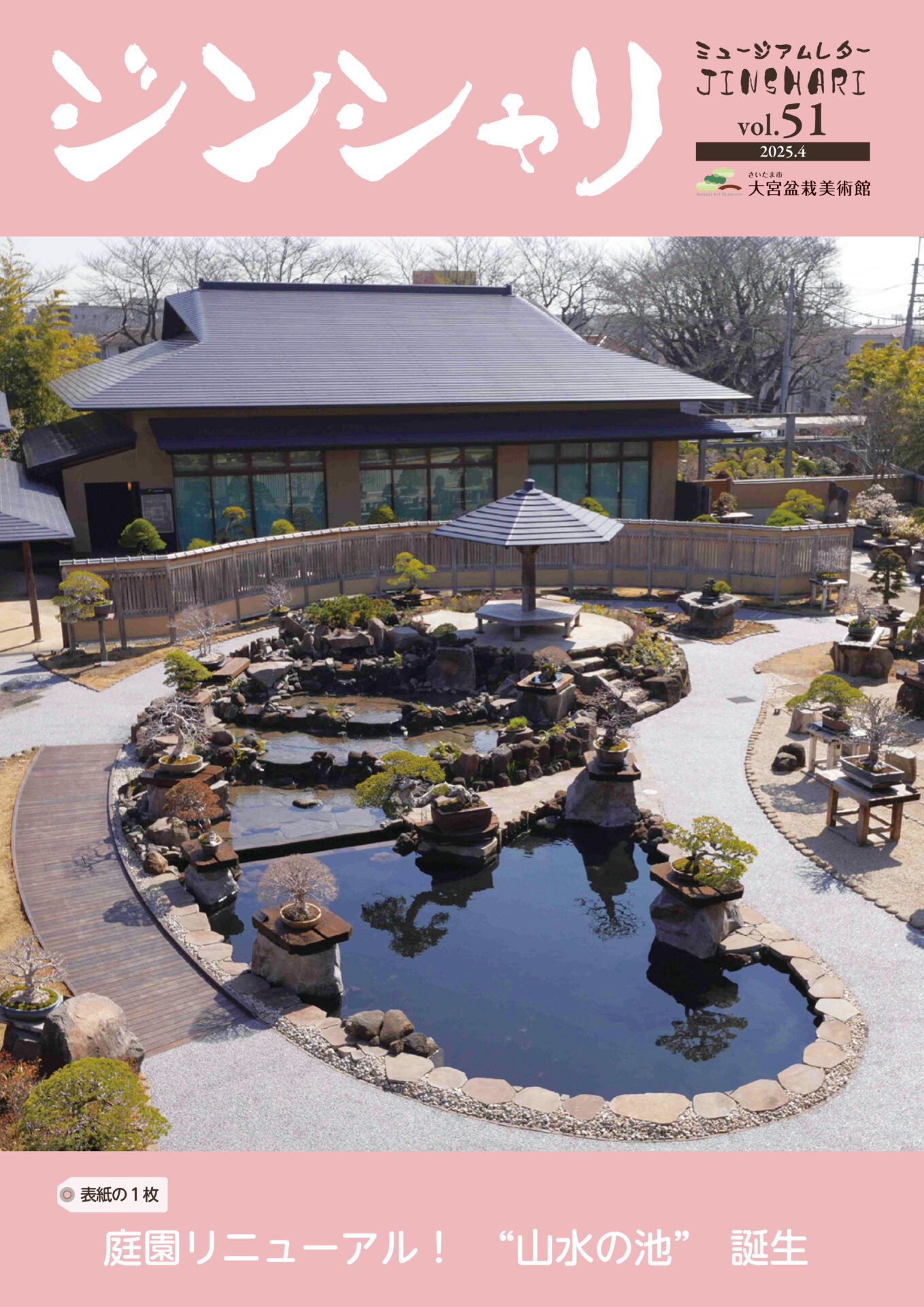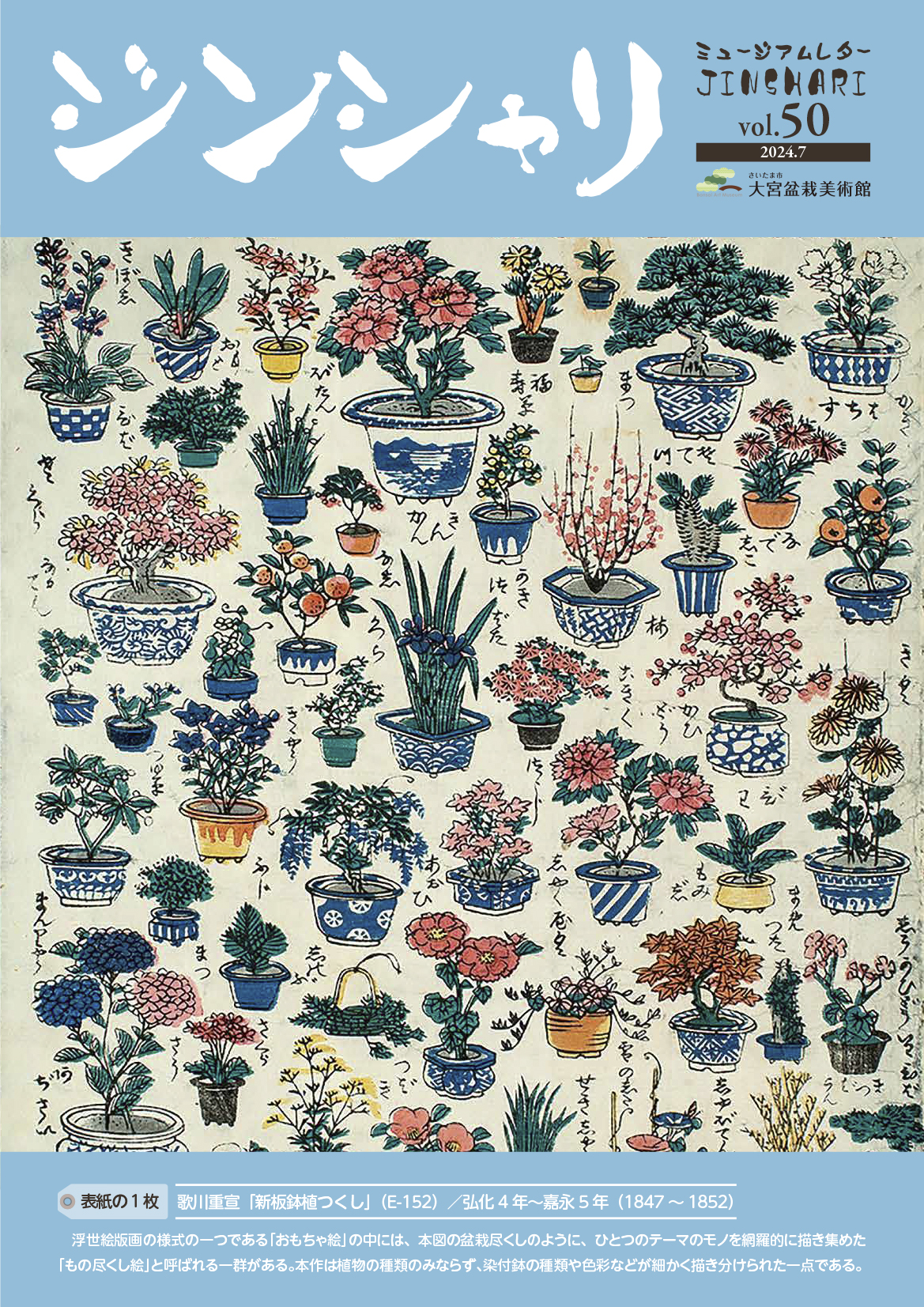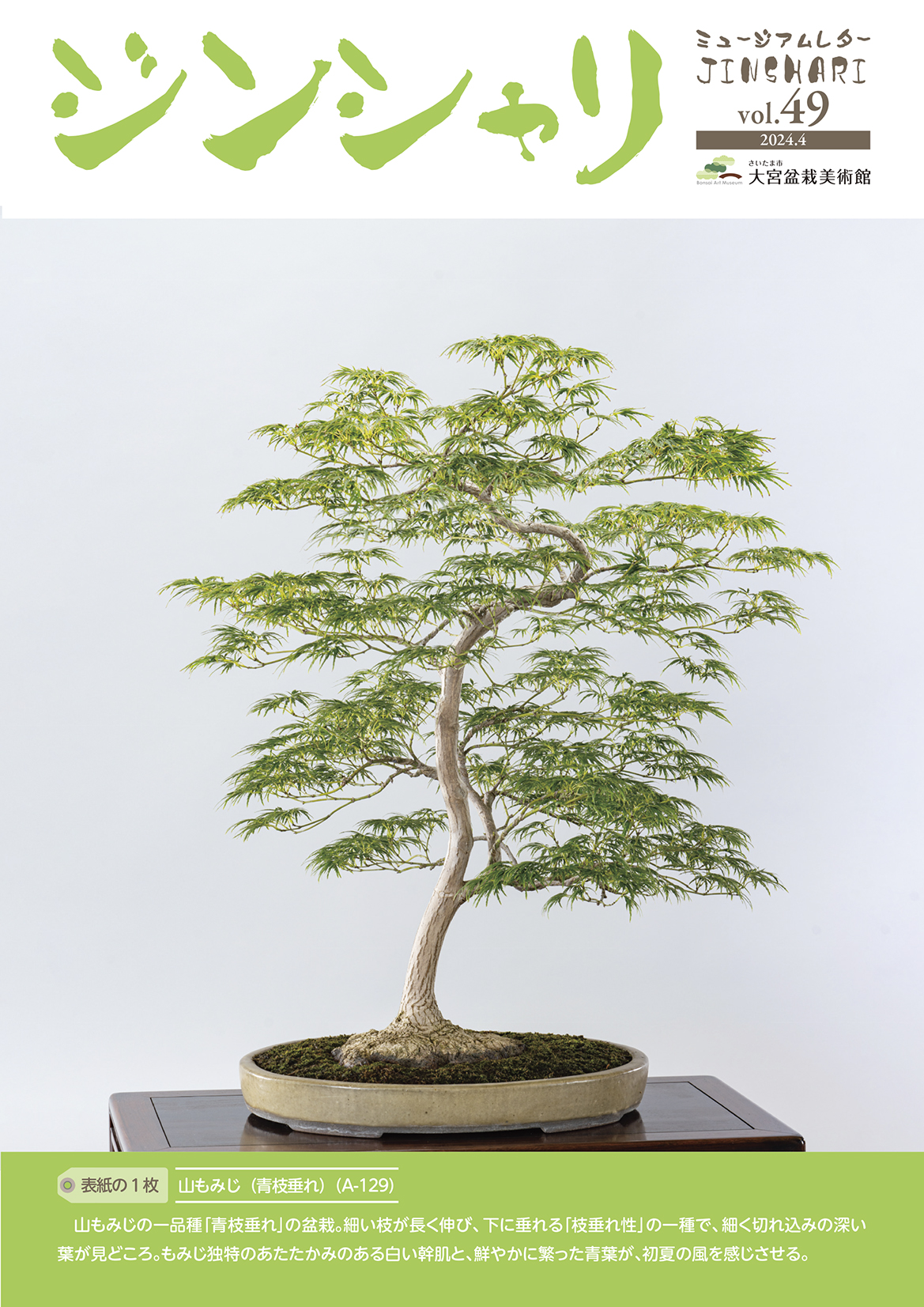Jinshari Vol.46

-
【Front Picture】Mountain Suiseki-stone named “Shukuzan” (C-024)
The rounded rise and fall of this stone create the image of a mountain range and the expression of a scene found in the heart of the mountain. The title of this stone, Shukuzan, means steep mountain, a name given for the seemingly sheer cliffs visible in this miniature landscape.
https://www.bonsai-art-museum.jp/en/collection/c-024/
Behind the Exhibits
~The Deep Yet Familiar World of Suiseki
In order to cool down during these hot midsummer months, we host the annual special exhibition “Refreshing Landscape Scenery – World of Suiseki” (Friday, 21st July~ Wed. August 30th, 2023, in collaboration with the Nippon Suiseki Association). Our “Behind the Exhibits” corner for this issue will be all about these viewing stones known as suiseki.
Suiseki viewing stones may be hard to understand on first glance, but I bet that everybody has a memory of picking up a stone by a riverbed, imagining it as something else and playing with it. Suiseki in the shape of a mountain are called yamagata-ishi, or mountain stones, while ones with a white streak that looks like water in them called taki-ishi, or waterfall stones.
You could create the image of an island floating in the ocean by placing a suiseki on a basin with spread out sand, or you could create the vista of a remote mountain village by decorating a bonsai with a mountain stone. As such, natural vistas can be seen from the shape and patterns of suiseki stones. The appreciation of suiseki stones has common ground to bonsai viewing as these huge natural images can be felt from such small stones.
If you think of it in this way, I am sure that you will feel a familiarity with suiseki. How about going to a river yourself to find a stone you like? If you do, make sure to get permission to collect stones from the landowner first. Also do not forgot to keep safe and to not harm the environment around you.
Suiseki are originally stones that were by the riverside and were picked up by somebody as they appeared like another object or because they reminded them of a natural vista. As the naturally formed shape is heavily revered, the value of a suiseki may drop if it is alerted artificially. Stones that have been left as they are called ubu-ishi and are highly valued.
However, the charm of a stone that has just been picked up and one that has been passed down for many years are different. What brings out this charm is through a process called yō-seki, or stone raising. For example, one can create a glassy, lustrous appearance on the surface of roundish stones by rubbing them for many years, making it look as if they are well-used. Like with bonsai, suiseki are also placed outside to let them bathe in the sun and will be occasionally watered. After repeating this many times, a stone will gives off an old and weathered feel.
Occasionally water is poured onto a suiseki before it is put on display. Better suiseki will look wet on the surface. This is called mizu-mochi. Before we open our museum, we sometimes pour water on our displayed suiseki. I recommend coming just as we open so you can see suiseki in a different light.
Suiseki give off a cool, refreshing feeling, so I hope that you can come to get a refreshing sight yourself.

C-054 Kibune-ishi Waterfall suiseki-stone

Waterfall suiseki-stone with water
Artist’s Work
Summer Work – The Hidden Art of Watering
The most important job for a bonsai artist in the summer is watering. Giving water to these bonsai planted in small pots can prove to be quite tricky. It is such a vital skill that the first three years of a bonsai artist’s training is spent on watering. We will introduce this important skill in this issue.
In the winter bonsai will need to be watered around once a day, but in the summer, they need to be watered at least three times a day. The experience and knowledge of a bonsai artist are very important when watering; they will need to decide when exactly to water in the morning, at noon and in the evening, and how much water is needing when watering. The reason for this is because these will depend on a number of facotrs, such as the weather and the season, whether the bonsai is deciduous or not, the species, the age, how long it has been since it was repotted, the shape of the pot, and the qualities and condition of each individual bonsai. A bonsai artist must be able to determine all of these when watering.
For example, the amount of water needed in each season respectively for a broadleaf like a Japanese maple, that absorbs a lot of water in the growing season, and conifers such as a Japanese juniper, that do not lose leaves in the winter so transpire through their leaves, are completely different. Similarly, the amount of water needed and the time of watering will change depending on the qualities of each species, such as the Japanese apricot that buds with flowers faster than other deciduous trees, or the Japanese white pine, which originally grows naturally in high mountain climates.
Kaeshi-mizu is a word you may have not heard before. As bonsai pots tend to be shallow and flat, the roots of older trees will cover all the surface, making it hard for water to get to the bottom of the roots. If you gave water to a tree like this without much thought, the water would just flow from the sides at the top and would not reach the bottom of the inside of the pot. So, bonsai artists will water it once, and then water it again after waiting a little while. This technique, called kaeshi-mizu, allows for water to get through all the plant by spreading the watering out over multiple sessions.
The most important time to pay attention to watering is straight after repotting. During repotting, parts of the root have been cut off, so one could say that this period is similar to a person after a surgery. As the roots struggle to absorb water during this period, more water is given to the leaves to let it be absorbed through there. Sphagnum moss is also laid on top to ensure that the soil does not dry out.
Some may think that taking care of plants is easier than taking care of animals. However, bonsai are very delicate since they need to be cultivated under a specific environment. Our bonsai technicians at the museum will often patrol around the garden and the exhibition rooms, listening to the voice of each bonsai. This endless effort is the key to keeping bonsai alive and maintaining their beautiful forms.
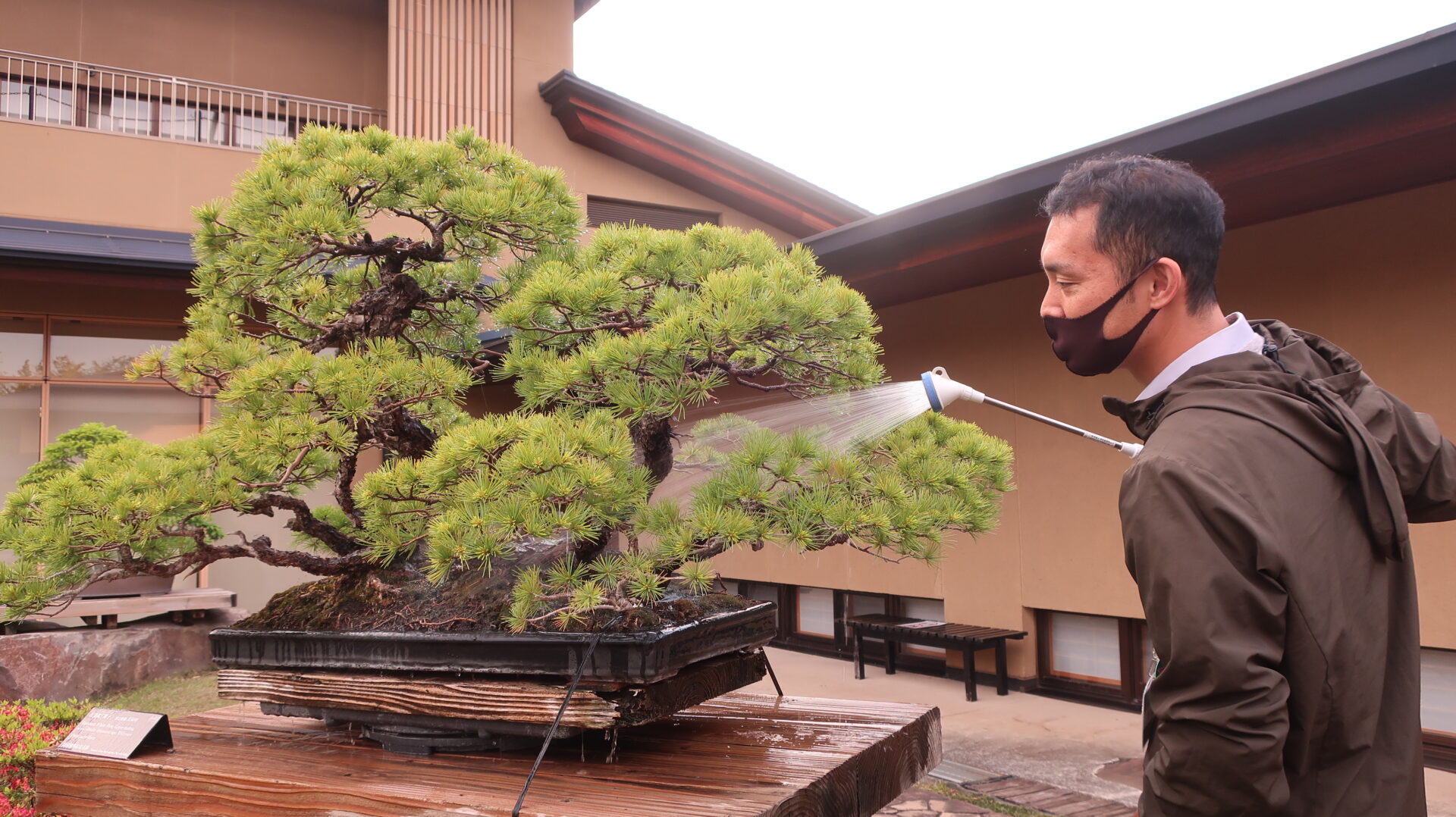
Watering in the Bonsai Garden (outside) (Japanese white pine named "Maiko")
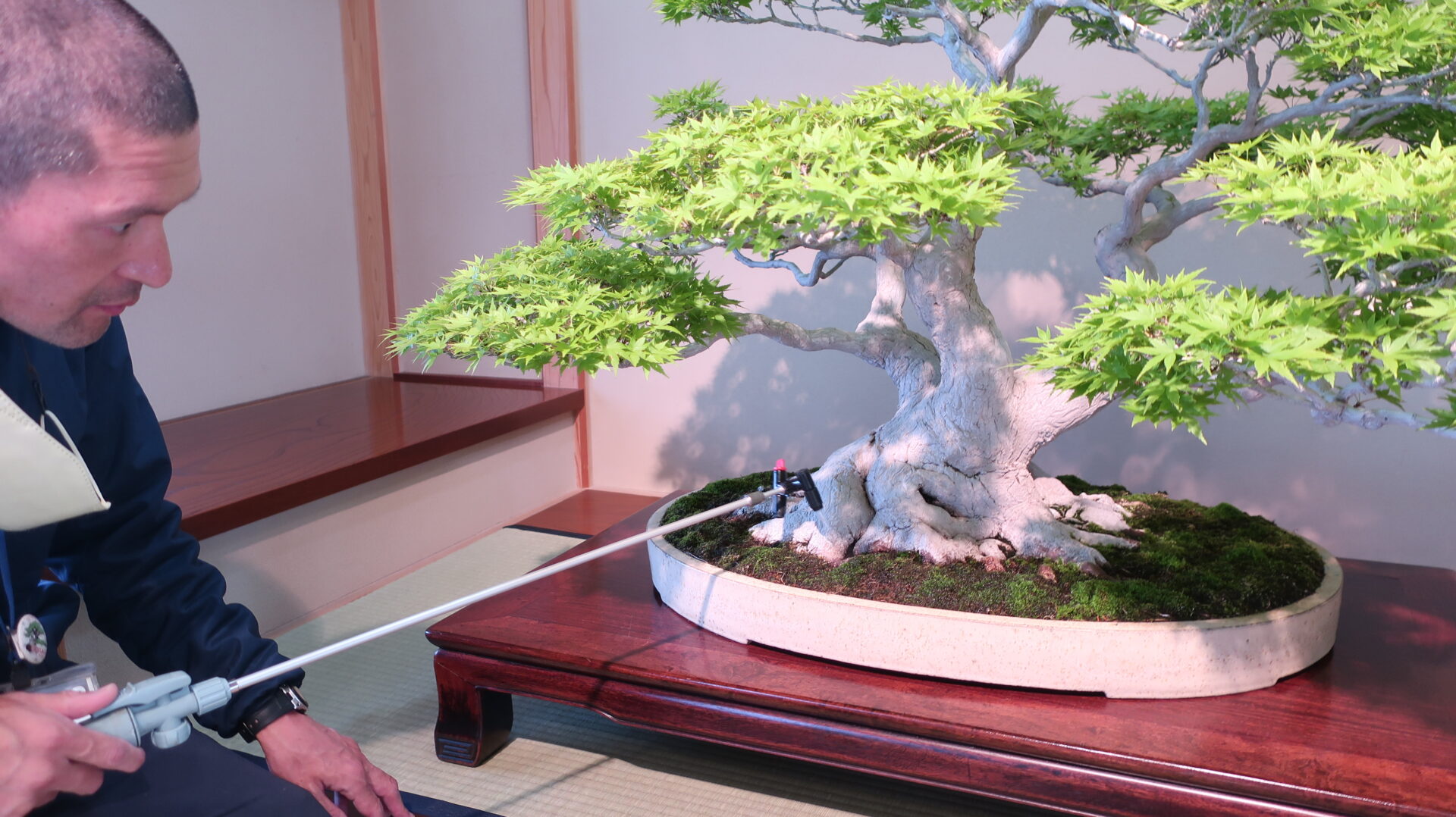
Watering in a zashiki room (inside) (Japanese maple)
Supporter Report
Formation of the Museum Supporters!
This year we have started the “Omiya Bonsai Art Museum Supporters” (39 members), a group formed from those who previously volunteered at the museum and with those who finished the International Bonsai Academy Intermediate course and wished to join.
The objective of the Omiya Bonsai Art Museum’s Bonsai Academy programme is to spread bonsai culture. So, by adding those who have learned the basics of bonsai tailoring and training at the Bonsai Academy classes to our support staff, we can expect that they will understand bonsai much further and be able to give even better supoort.
The tasks of the supportes include: Guides for visitors, acting as an assistant during workshops, guiding during Elementary School Trips, and acting as an assistant during bonsai academy classes.
We will be able to properly give museum guides to guests now that COVID-19 restrictions have been loosened. The wonderful bonsai at the museum and all of us museum supports are waiting, so please give us a visit!
(Museum Supporter - Yumiko Miyamoto)
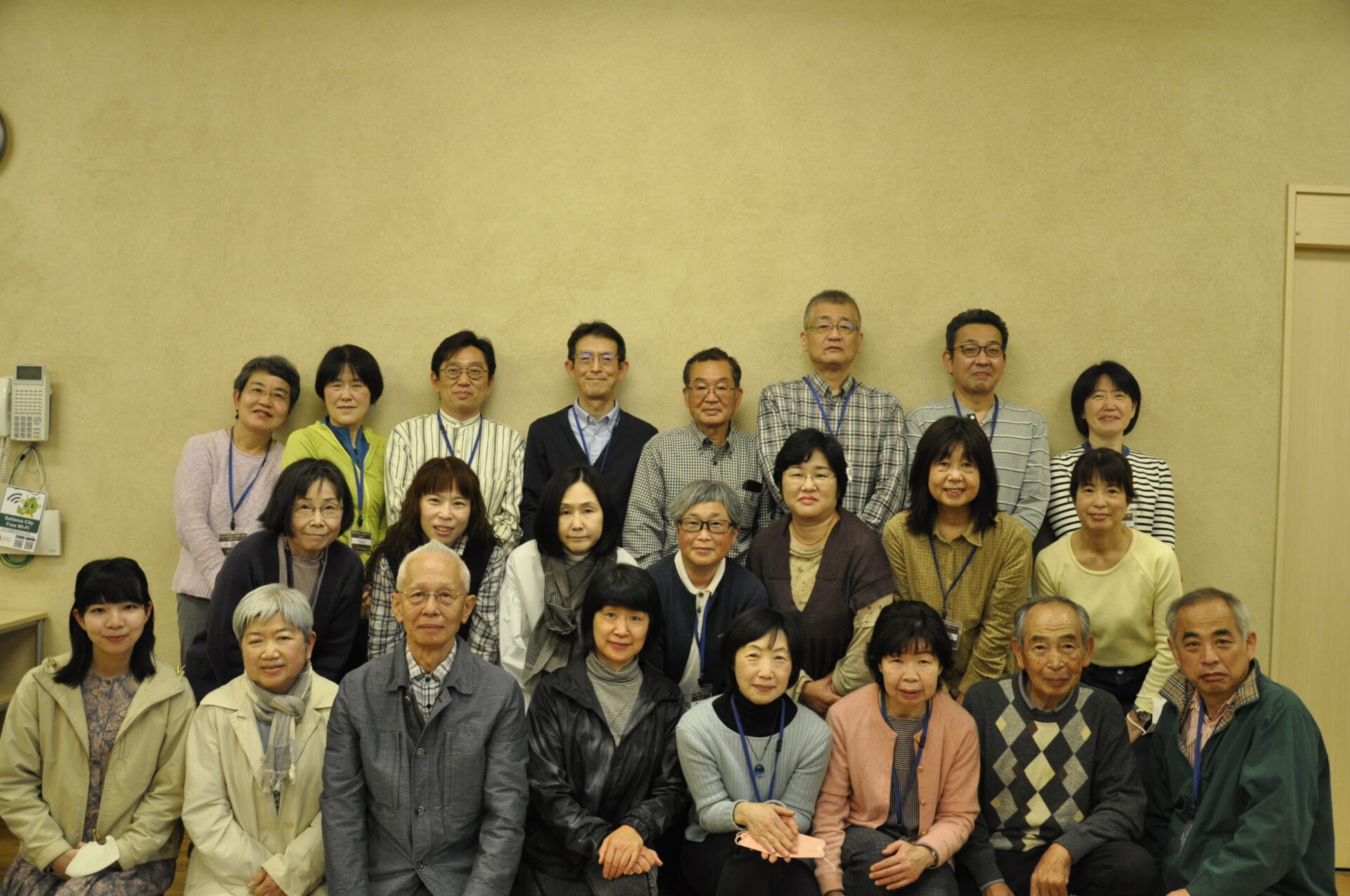
Supporters Together (1)
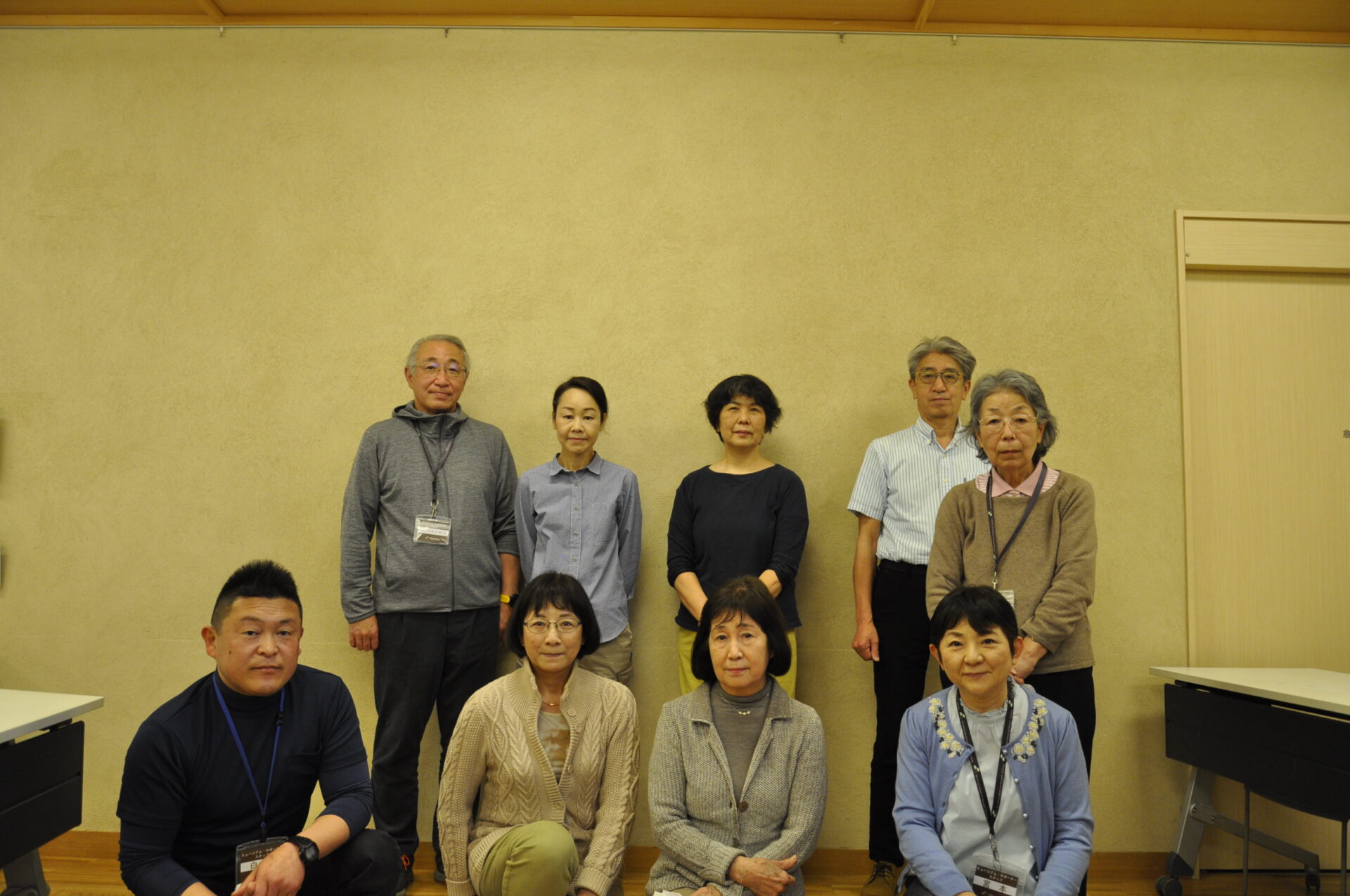
Supporters Together (2)
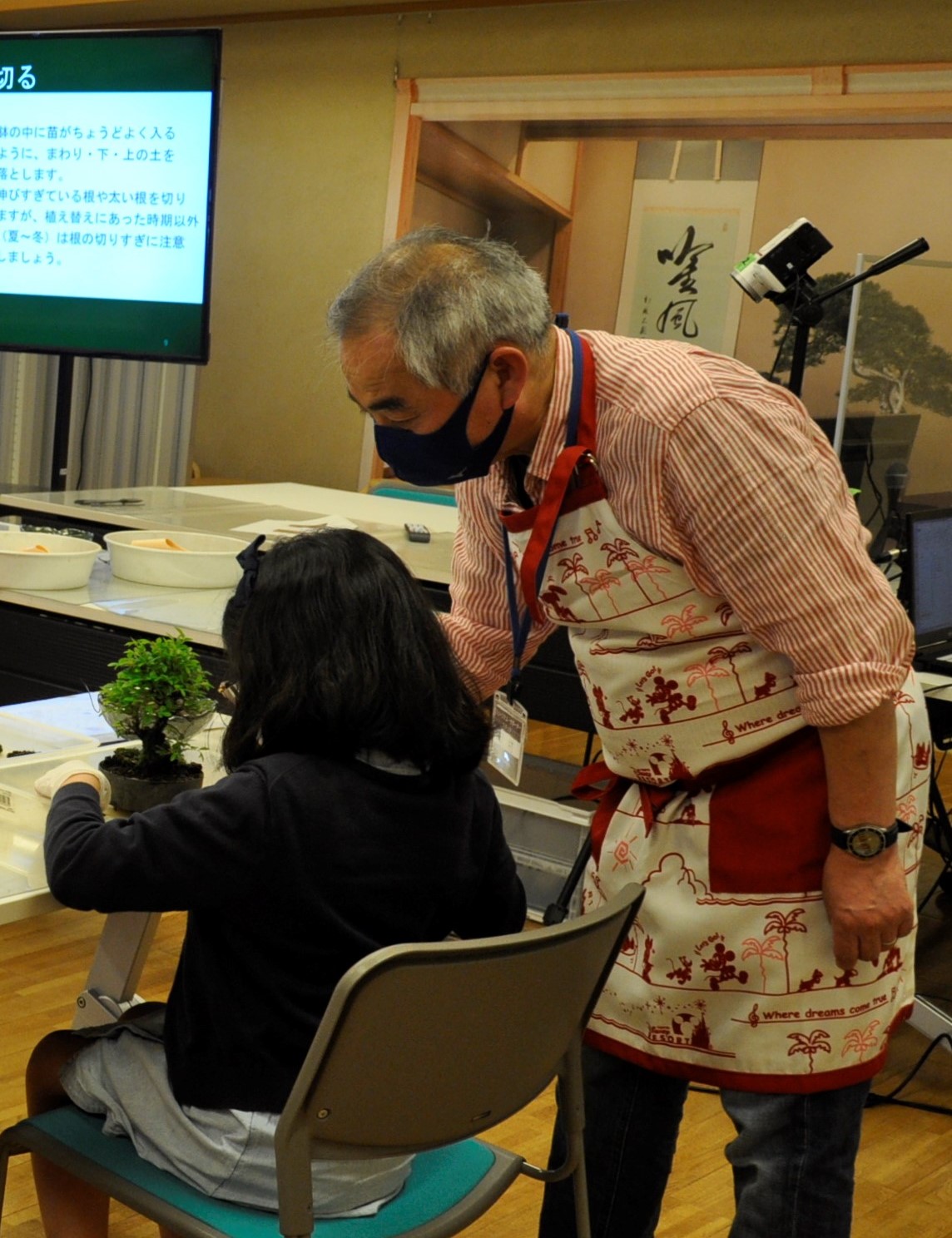
Support making a bonsai (during a workshop)
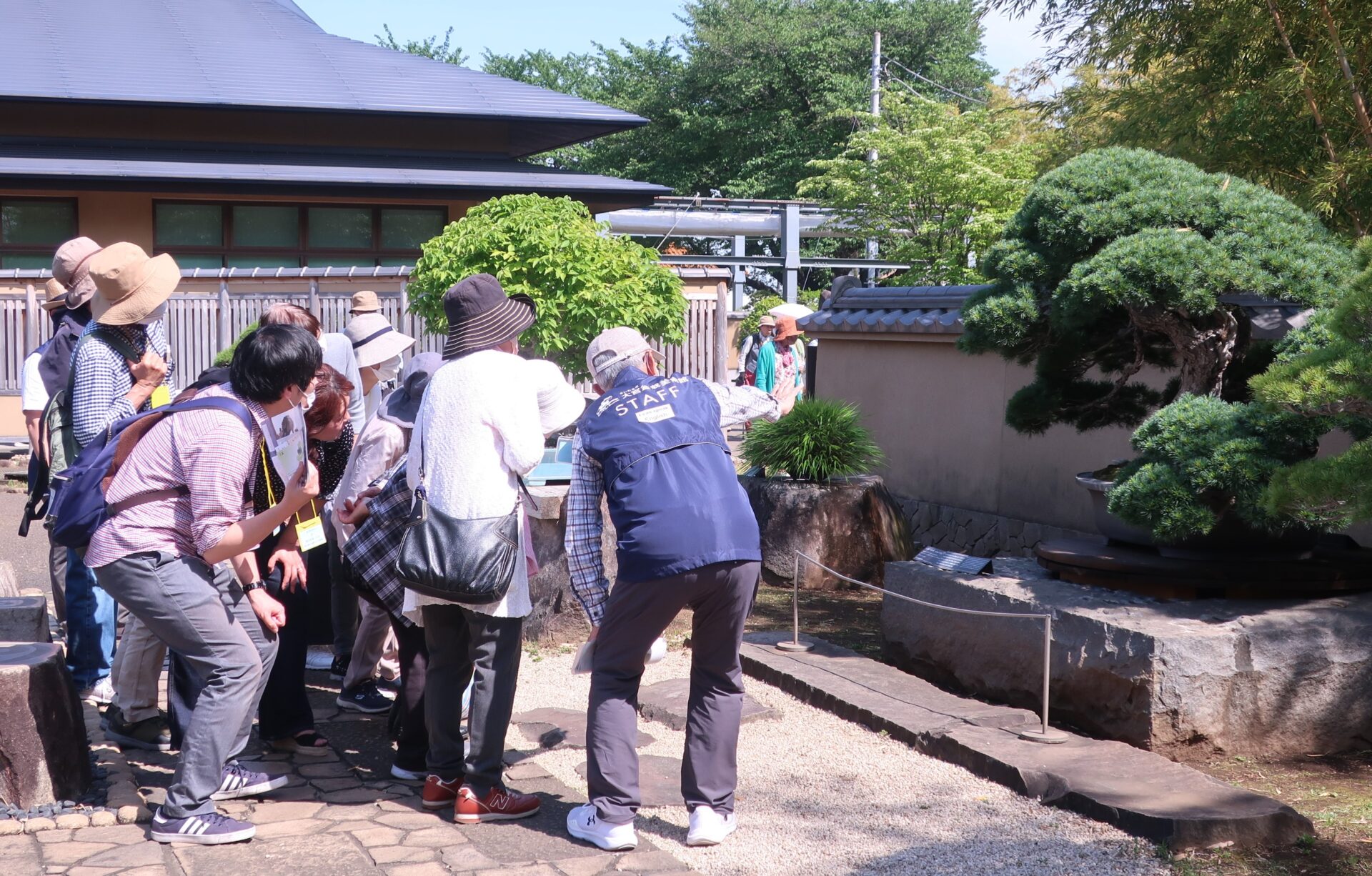
Exhibition guides have started (photo is of a guide during Golden Week)
Information about our exhibition guides for guests can be found here.





